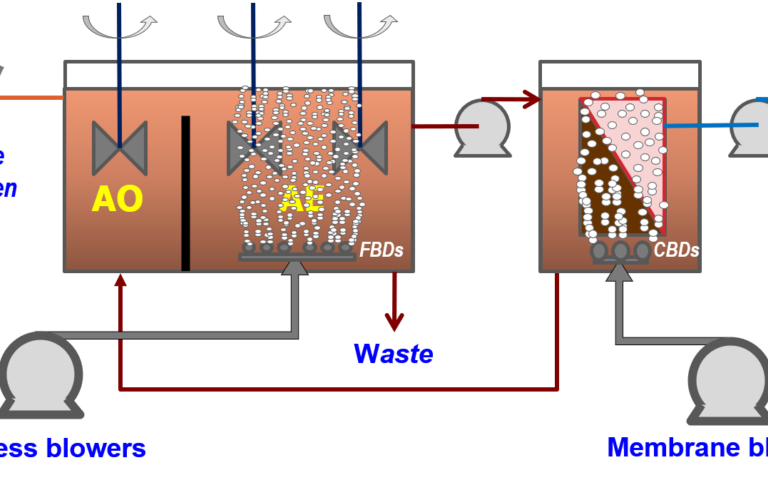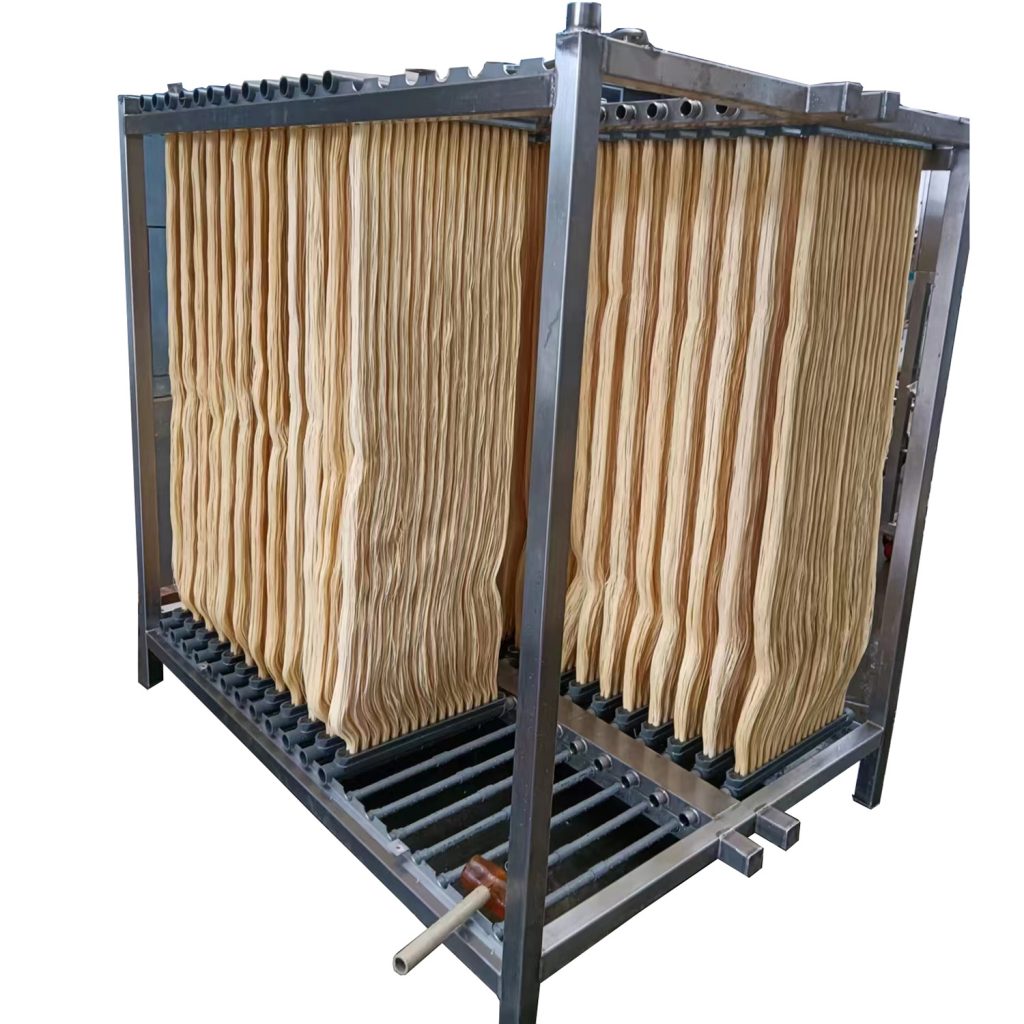How Membrane Layer Bioreactors Are Transforming Water Purification Equipments
The emergence of membrane bioreactors (MBRs) represents a significant development in the field of water purification, merging organic therapy procedures with sophisticated membrane layer purification modern technologies. As international water shortage increases, the duty of MBRs in assisting in drinkable water reuse and sustainable water administration becomes increasingly crucial.
Overview of Membrane Layer Bioreactors
Membrane layer bioreactors (MBRs) stand for a considerable development in water purification modern technology, as they combine biological therapy procedures with membrane layer purification. This assimilation improves the effectiveness of wastewater therapy by using microbes to deteriorate organic contaminants while at the same time employing semi-permeable membrane layers to different treated water from put on hold virus and solids.
The MBR system commonly contains a biological activator where the microbial population metabolizes pollutants, complied with by a membrane purification system that retains biomass and permits only tidy water to go through. This dual capability results in greater effluent high quality contrasted to traditional therapy techniques. MBRs can be run in both batch and continual flow settings, providing adaptability in style and application.
They likewise make it possible for the recovery of water for reuse, thus contributing to water sustainability efforts. On the whole, MBRs are at the forefront of improving water treatment effectiveness and high quality, showcasing the possibility for innovative options in ecological monitoring.
Benefits of MBR Technology
The integration of biological treatment with membrane filtration provides various advantages for water purification processes. One of the main benefits of Membrane Bioreactor (MBR) innovation is its capability to efficiently eliminate both organic and inorganic contaminants, leading to top quality effluent. The membranes serve as a physical barrier, avoiding suspended solids and virus from going through, which enhances the overall safety and integrity of cured water.
Furthermore, MBR systems need a smaller impact contrasted to traditional treatment methods, enabling extra reliable area usage. This compact layout is especially beneficial in urban setups where land is limited. MBRs also show functional versatility, accommodating differing influent high qualities and flow prices without considerable efficiency deterioration.
Additionally, the procedure uses enhanced nutrient elimination abilities, particularly for nitrogen and phosphorus, which are essential for stopping eutrophication in receiving waters. The lowered sludge production related to MBR modern technology also converts to lower disposal prices, making it a cost-effective option in the long run - Membrane Bioreactor. Generally, the advantages of MBR modern technology position it as a leading selection for innovative and lasting water filtration systems, dealing with both ecological and economic worries
Applications in Water Purification
Applications of Membrane Bioreactor (MBR) modern technology in water purification are diverse and impactful, addressing different therapy needs across numerous markets. MBRs successfully incorporate biological treatment procedures with membrane layer filtration, making them suitable for municipal wastewater treatment, commercial effluent monitoring, and even drinkable water reuse efforts.
In community settings, MBRs are progressively utilized to improve the top quality of dealt with wastewater, permitting conformity with rigorous discharge regulations and facilitating the go now recycling of water for irrigation and non-potable uses. Their compact design also makes them suitable for urban environments where room is restricted.
Industrially, MBR modern technology is made use of to deal with procedure water and wastewater, especially in markets such as food and beverage, pharmaceuticals, and textiles. By efficiently removing contaminants and suspended solids, MBRs help industries minimize environmental influences while recouping useful resources from wastewater streams.
Furthermore, MBRs are acquiring traction in decentralized water therapy applications, where small systems can be deployed in remote areas or creating areas. This versatility enables communities to attain lasting water administration solutions, boosting accessibility to clean water while Your Domain Name reducing dependence on standard treatment approaches.
Instance Research Studies and Success Stories

In another instance, a textile production facility in Bangladesh took on MBR technology to resolve its wastewater challenges. The system reduced chemical oxygen need (COD) levels from 1,200 mg/L to much less than 100 mg/L, therefore fulfilling regulative criteria and substantially minimizing ecological impact.
The University of Cape Community's MBR setup has actually proven reliable in treating greywater for non-potable reuse on school. This task not only preserves potable water however additionally works as an instructional model for sustainable techniques.
Additionally, a fish and shellfish handling plant in Norway utilized MBR innovation to deal with effluents including high degrees of raw material, accomplishing over 90% toxin elimination. These study emphasize MBR technology's adaptability and its essential role in improving water top quality throughout diverse applications.
Future of Water Treatment Solutions
As worldwide water shortage and air pollution obstacles magnify, ingenious water therapy remedies are becoming increasingly vital to make certain lasting accessibility to tidy water. The future of water therapy depends on the integration of advanced technologies that improve the effectiveness and efficiency of purification processes. Membrane bioreactors (MBRs) are at the leading navigate to this site edge of this development, integrating biological treatment with membrane filtration to produce top quality effluent appropriate for different applications.

Arising patterns such as resource recovery from wastewater, including nutrients and power, will certainly additionally transform treatment centers right into environment-friendly hubs. Innovations in nanotechnology and membrane products assure enhanced efficiency and longevity of purification systems.

Final Thought
Their function in safe and clean water reuse and sustainable water administration highlights their relevance in addressing worldwide water deficiency challenges. Continued research study and growth will certainly further improve the efficiency and fostering of MBR technology, guaranteeing a durable future for water therapy remedies.
The emergence of membrane bioreactors (MBRs) represents a considerable improvement in the area of water filtration, combining organic therapy procedures with cutting-edge membrane filtration technologies. As worldwide water shortage escalates, the duty of MBRs in promoting potable water reuse and sustainable water management becomes increasingly crucial. They also enable the recovery of water for reuse, thus contributing to water sustainability campaigns.As international water deficiency and air pollution obstacles increase, cutting-edge water therapy options are ending up being progressively important to guarantee sustainable accessibility to tidy water. Their function in potable water reuse and sustainable water monitoring highlights their relevance in attending to worldwide water scarcity difficulties.